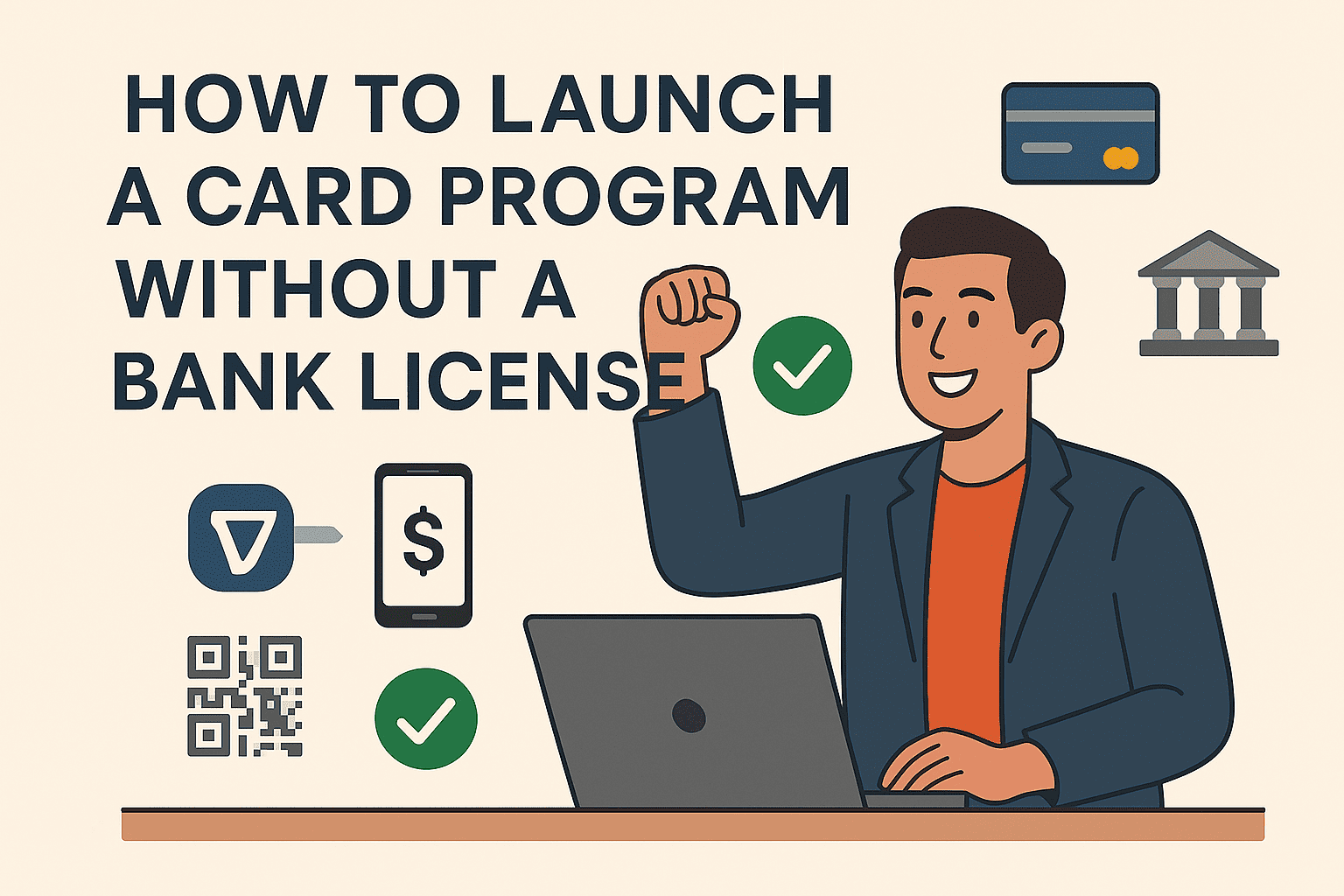
Launching your own card program used to be a complex, expensive process reserved for banks and a handful of well-funded fintech startups. From regulatory approvals to partnerships with card networks and banks, getting a branded card into the hands of your users often took months of legal work and millions in capital.
Today, that’s no longer the case.
Thanks to modern fintech infrastructure, you can now launch a compliant, scalable card program without needing your own bank license.
Here’s how it works, what you’ll need, and how companies are issuing cards faster and smarter using embedded finance solutions.
The Traditional Way: Why Card Programs Were So Difficult
Building a card program from scratch typically required:
- A licensed bank or e-money institution
- Direct integration with a card network (e.g., Visa or Mastercard)
- PCI compliance and fraud monitoring systems
- Contract negotiation with issuers, processors, and KYC providers
- Months of regulatory approvals in each operating country
This made card issuing inaccessible for most startups, especially those outside North America or Europe.
The Modern Way: Embedded Card Issuing
Today, companies can plug into Banking-as-a-Service (BaaS) platforms that handle the licensing, network relationships, and compliance on your behalf.
This approach allows you to:
- Create and issue prepaid, credit, corporate or debit cards
- Manage cards programmatically via API
- Set spend controls, funding sources, and usage rules
- Stay compliant without building a full compliance team
Instead of becoming a bank, you’re partnering with regulated infrastructure that already has the necessary licenses and integrations.
What You Need to Launch a Card Program (Without a License)
Here are the core components:
1. A Licensed Issuer
This is the underlying bank or fintech that holds the necessary regulatory approvals and card network relationships.
2. A Processor
Handles transaction routing, settlement, card creation, and balance management.
3. KYC & Compliance
To meet anti-money laundering requirements, users must be verified. A good partner will offer embedded KYC and transaction monitoring.
4. A Card Issuing API
This is your interface for creating, funding, freezing, and managing cards — ideally without writing any backend infrastructure from scratch.
Use Case: Launching Virtual Cards for Crypto Users
Let’s say you operate a crypto wallet or exchange and want to let your users spend their USDC balance online.
With traditional banks, this would be nearly impossible.
But with a provider like Yativo Card Issuing, you can:
- Instantly issue virtual prepaid VISA cards
- Fund them with USDC or USDT
- Top up to to $10,000 USD per card
- Let users spend online anywhere VISA is accepted
- Offer monthly cashback in $TIVO tokens, based on interchange revenue
The entire flow — from KYC to card funding — is handled via API or dashboard, making it ideal for fintechs that want to move fast without navigating bank partnerships.
Advantages of Issuing Cards Without a Bank License
| Benefit | Description |
|---|---|
| Faster Time to Market | Launch in weeks instead of months |
| Lower Overhead | No need to build a compliance or treasury team |
| Flexible Monetization | Earn interchange and offer cashback or rewards |
| User Stickiness | Users are more likely to stay active with spending options |
| Brand Control | Offer a branded experience inside your own app |
Final Thoughts
You don’t need a banking license or a multi-year roadmap to launch your own card program anymore. By partnering with a card issuing platform that handles the complex backend work, your business can focus on growth, user experience, and revenue.
If you’re ready to issue your own cards and unlock new use cases — from crypto payouts to user incentives — now is the time.
Explore how Yativo Card Issuing can help you launch smarter.
Visit Yativo Card Issuing →